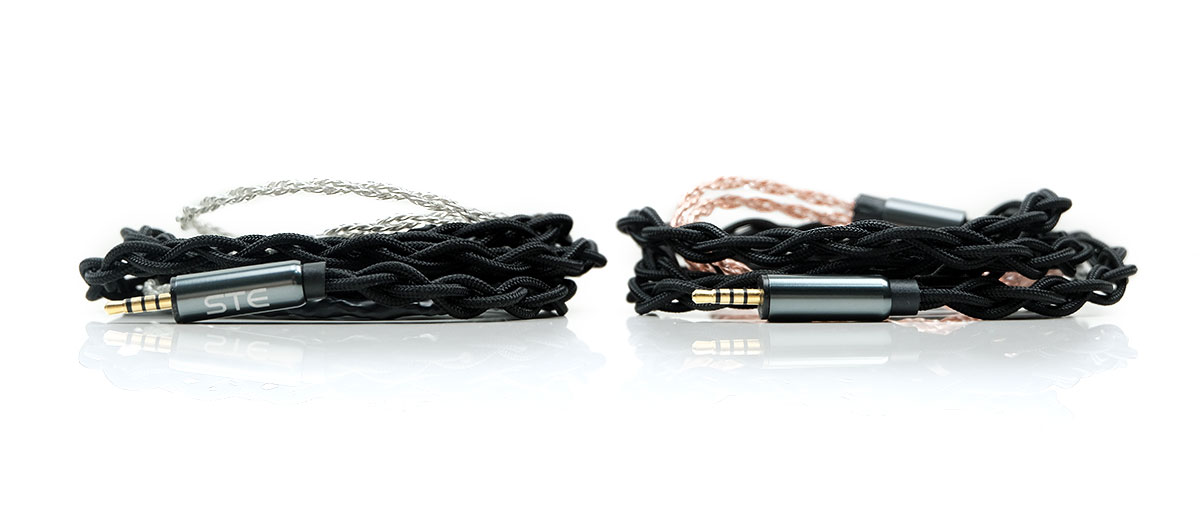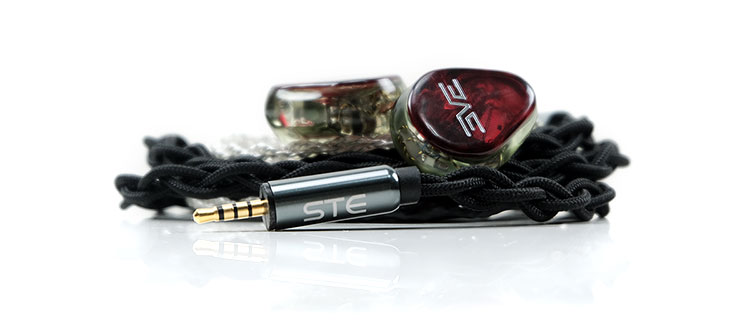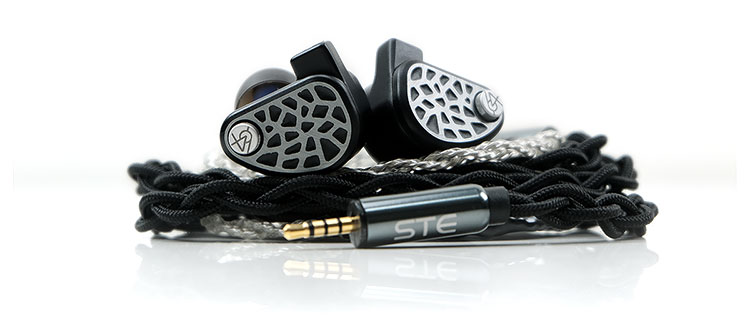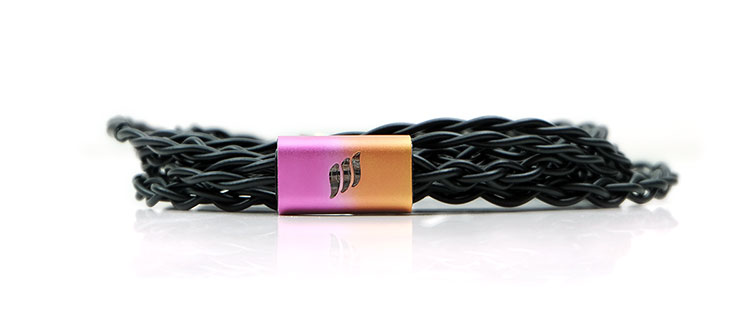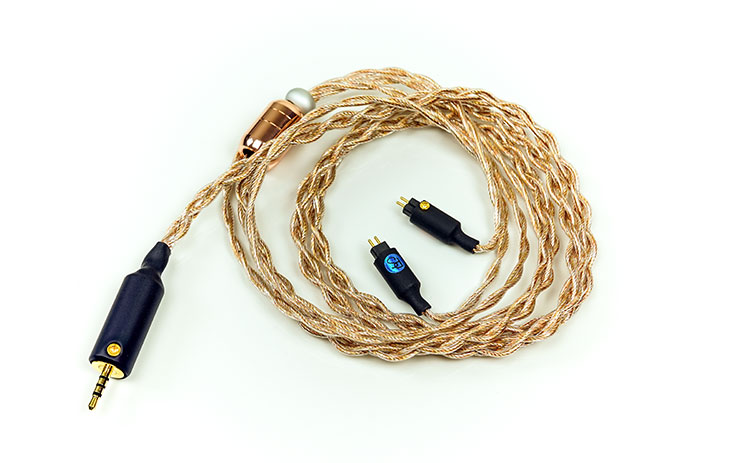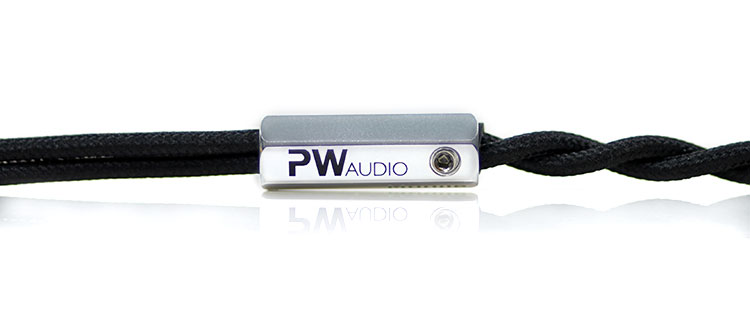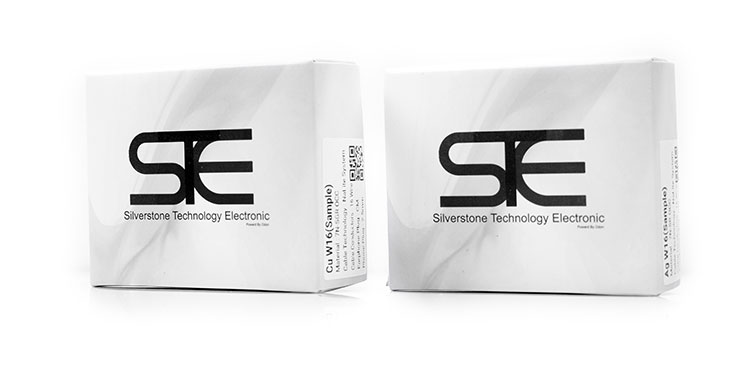Performance Impressions
Summary
These two cables kind of played up to their copper and silver tags in a stereotypical manner. With our paired monitors, the 64 Audio U18s, VE EVE20, and the Noble Audio Zephyr, the differences played out a bit more in terms of perceived clarity and dynamic range, particularly on the treble.
The Ag W16 is the cleaner sounding of the two cables and the Cu version the slightly softer fuller-sounding pairing. I found both cables to offer a similar level of low-end extension with the Cu W16 having the edge in terms of body and warmth but neither as ‘bass-heavy’ as something like the Effect Audio EVO 10 which is more to the extreme end.
Rather the low-end quantity was more balanced with our monitors but complimented with a very competitive dynamic range performance. Particularly with the Ag W16 pairing which just felt a little tighter and more energetic on the low-end compared to the warmer and softer Cu W16.
That cleaner character is more often than not due to the amount of top-end headroom and treble presence from the Ag W16 on the test monitors. The Cu W16 comes across as attenuating the treble a bit more resulting in what seems to be a simpler presentation pushing you down to more of a mids and vocal focus.
The Ag W16 on the other hand sounds more vibrant through the mids, airier, and more expansive but not as warm or full sounding. I would hesitate to say it is more resolving but certainly, that cleaner edge and better top-end retrieval make it seem the more resolving of the two cables.
Timbre
The Ag W16 is the more linear of the two cables with a neutral low-end compared to the full-sounding and warmer bass timbre of the Cu W16.
You can easily pick up the difference in the presentations when paired with monitors such as the EVE20 from Vision Ears. You get a little less body coming through the mids and a milder bass fundamental.
If I want more power in my instrumental notes and more body on the low-end I would pick the Cu W16. This is a very nice pairing in particular for BA-only monitors that have a lighter cleaner tone to their timbre and you want to add a bit more PRaT and keep it smooth sounding.
The dynamic range and energy of the Ag W16 though are a little more convincing. What I mean by that is the tighter definition it brings to the low-end, a better sense of separation through the mids, and a cleaner more extended higher pitching instrumental timbre.
Instrumental timbre is more neutral with a more accurate harmonic balance overall. Slightly less weight but with a bit more bite, especially in the upper-mids that helps pick out those rapid-fire imaging cues that the Cu W16 might miss.
Staging
The Cu W16 is a little heavier on the low-end, though by no means more extended, just fuller sounding. The Ag W16 actually has the better low-end layering and separation with the Zephyr and the EVE20 however it is not as forward sounding.
Lower-mids instrumental presence is also a shade more forward sounding with the Cu W16 with that enhanced fundamental and generally thicker sound. The Ag W16 is by no means lean, rather both weight and positioning are more neutral but it will give you a bit more space and perceived articulation.
On the flip side, the Ag W16 has way more presence and energy with the test monitors for vocal and percussion. The headroom and the amount of air are superior to the Cu W16. In turn, this creates a stronger perception of separation and resolution with paired monitors compared to the Cu W16 slightly darker tone.
A good example is with the EVE20 combined with the Cu W16 using Jamiroquai’s Cloud track from the Automation album. This track’s mix has this underlying bass riff that sounds forward and thicker on the CU W16 compared to the neutral weight and presence of the Ag W16.
However, the vocal clarity and imaging on the Cu W16 right above that bass line is not as tight, slightly diffuse, and soft sounding. The Ag W16 vocal and percussion above are nailed on tight, clean, and more vivid to my ear, benefitting from the better treble extension and air.
Synergy
Both cables play to their relative strengths in context to the wiring material being used. That means the Cu W16 has nice synergy with clean monitors or BA monitors that might need a smoother tone and a bit more low-end thickness and warmth.
The Ag W16 can balance out natural smooth-sounding monitors quite well but also take advantage of IEMs that excel in detail and separation. I also found that the Ag W16 did a little better with dynamic drivers. Not so much in weight, the Cu W16 is still the better choice there, but rather in terms of layering and definition.
With the likes of the 64 Audio tia Trio, I preferred that enhanced clarity and articulation over the warmth and body of the Cu W16. I found it had a better balance with its cleaner midrange and treble tones as well as offering a bit more space for the mids and treble to shine. Mind you, the Cu W16 is the better choice if you find the tia Trio upper mids to be a bit bright or feisty.
With pure BA monitors, the Cu W16 sounded a bit more analog and warmer with the EVE20 with a stronger fundamental. The Ag W16 sounded more neutral but with better vocal and treble presence. If you need more air with this monitor then the Ag W16 will give you that but if you want something more forgiving and richer, then the Cu W16 is the better match.
With the U18s, I really could not look beyond the Ag W16. I preferred the dynamic range performance with this cable over the stock Silver cable. It also sounded more energetic and vivid in key areas that are noticeably more relaxed when paired with the Cu W16. You do not want the U18s sounding too soft and smooth or it can sound a bit lifeless.
Select Comparisons
Effect Audio EVO 10
$588
Technical
The EVO 10 is our latest major cable review and has a similar pricing point to the S.T.E. Cable Ag W16. Unlike the 7N pure silver of the Ag W16, the EVO 10 is a mix of materials though not an alloy with the use of both 26AWG UP-OCC Gold-Plated Copper and UP-OCC Silver-Plated Copper.
Both cables have differing geometries with the EVO 10 using a proprietary Litz build described as a kevlar-infused ‘septupled’ (7) core bundled Litz geometry using Surlyn® insulation. The Ag W16 uses STE Cable’s patented Nalite System geometry with an inner and outer core with multiple element coatings and a metal/cotton insulation material.
The final key difference is the core or wire count with the Ag W16 using a 16-core count split 8 x 8 in their Nalite geometry whereas the EVO 10 is a more standard 4-core configuration.
Design
Two incredibly different design approaches with the only commonality the liberal use of black colors in their cable jackets. The EVO 10 uses a firmer UltraFlexi PVC black jacket with a tight short-throw braid and an attractive plastic transparent splitter showing off the mix of wires.
The Ag W16 uses a more traditional two-tone split of a fabric jacket below a lightweight metal round splitter finished also with a short-throw braid around the individual channels. Beyond the splitter, you get a silvery aesthetic with a soft PVC jacket and a twisted finish.
The Ag W16 is also a little bit lighter and softer than the EVO 10 but both have a very disciplined handling experience with zero memory retention or kinks. In terms of microphonics, the EVO 10’s softer PVC creates is a quieter cable compared to the fabric of the Ag W16.
Both have multiple termination options but the designs are quite different. The EVO 10 has a bigger jack barrel compared to the thinner lighter barrels of the Ag W16. However, the design of the EVO 10 barrels are more unique and attractive looking. Both use similar short round barrels with different color finishes for the terminations.
Performance
For this comparison, I went hybrid using the 64 Audio tia Trio because I had a feeling it would be easier to pick out the differences on the low-end with that big dynamic driver.
Sure enough, what was nuanced, (BA), suddenly became quite obvious, (dynamic), with the EVO 10 delivering a lot more bass weight and a bit more warmth also on the low-end. The Ag W16 is the cleaner of the two cables with a little less weight. It sounds more precise but delivers a slightly cooler tone to the tia Trio right up into the mids.
The EVO 10 has the edge in terms of power but it’s a bit softer on the low-end despite the additional physicality. The tia Trio sounded a lot more fun with the EVO 10 but a little less refined compared to the Ag W16 tia Trio pairing’s tighter but leaner bass delivery.
On the top-end, the Ag W16 is a little brighter and cleaner offering more sparkle whereas the EVO 10 sounds the more liquid and smoother of the two when paired with the tia Trio.
In turn, that creates a more neutral tone to the tia Trio timbre for the Ag W16 and slightly drier decay with a bit more upper mids focus, especially percussion hits. The Evo 10 sounded a bit richer in the mids, not quite as well separated through the lower mids but more rounded for vocals and instrumental timbre.
Overall, the Ag W16 is more neutral with the tia Trio, with better separation through the mids and a bit more high-end presence. The EVO 10 allows the tia Trio bass to gather a bit more power, sounds warmer and more intimate on the mids, and a little more relaxed with less sparkle.
PLUSSOUND Tri-Copper
$549
Technical
The Tri-Copper is another ‘mid-fi’ copper-based cable and might prove an attractive alternative to S.T.E’s Cu W16. The clue is in the name with both cables using copper as their primary core wire.
In the case of the Tri-Copper, this an EXO version for this price point with a mix of 26AWG UP-OCC copper, silver-plated copper, and gold-plated copper compared to the CU W16’s simpler high purity 7N copper 16-core 26AWG wire.
Both have different geometries with the Tri-Copper using classic Type 6 Litz configuration features bundles of type-4 Litz wire twisted around a fiber core. The Cu W16 uses their patented Nalite System geometry with an inner and outer core with multiple element coatings and a metal/cotton insulation material.
As per the EVO 10 comparison, the Tri-Copper is a 4-core for the EXO series though you can get it in 6 or 8 -wire designs cost depending. The Cu W16 is a fixed 26AWG 16-core design but you can buy an 8-core version called W8 and a 4-core Lite version called Cu Lite.
Design
As a caveat, the Tri-Copper sample I have is a relatively older version and PLUSSOUND have made some improvement in their designs which I will try to account for.
Right away though you can see the key differences. The Cu W16 uses a split-sleeve finish with a black fabric short-throw design below the splitter and a softer PVC transparent jacket above which allows the coppery tone to shine through.
The Tri-Copper uses their PS Insulation transparent jacket for the entire cable though it has a slightly lighter copper tone, almost rose gold in appearance, and nicely complemented with a stubby rose gold metal splitter. It also has an attractive short-throw braid but lacks any memory wire below the connectors.
The Cu W16 is the lighter of the two cables, perhaps due to the smaller barrels and lighter metal materials. You can reduce the weight of the Tri-Copper however if you pick their wood-based splitters which are a lot lighter.
Handling on both is excellent though I have to saw the Cu W16 has a bit more discipline with even fewer waves or curves when laid out flat compared to the Tri-Copper. On the other hand, the Tri-Copper has less microphonics on either side of the splitter.
Both have solid termination, splitter, and jack barrels though PLUSSOUND has the wider range of choices as well as a massively improved finish compared to the ones in the picture. The Cu W16 barrels have fewer finished options but come with a smaller form factor.
Performance
A couple of differences here. However, for a start, both are more to the warm side than clean or neutral and both do really well in terms of low-end slam and weight.
However, there is a slightly better dynamic range performance for me on the Cu W16 that comes through as being the more urgent, more impactful, and vivid of the two cables when paired with the Vision Ears EVE20.
The Tri-Copper sounds much more rounded on the low-end through the mids. What that means is a heavy even-harmonic emphasis in its timbre due to what seems to be a lower treble presence in its performance compared to the Cu W16.
The Cu W16 deliveries a bit more air and headroom on the EVE20 and in turn it has a bit more sparkle compared to the Tri-Copper. You get the weight, the slam, and a smooth tone but it’s more accurate in its harmonic balance through the bass and mids.
That additional treble headroom and perception of the enhanced dynamic range also offers improved instrumental separation on the EVE20 through the mids with the Cu W16. The Tri-Copper in comparison is the thicker timbre but the more intimate presentation with the EVE 20.
Overall, I suspect the Cu W16 is offering an edge in dynamic range, headroom, and instrumental separation throughout whereas the Tri-Copper is offering more warmth and body but a darker tone to the EVE20.
PW Audio Monile
$551.99
Technical
Switching back to the Ag W16 again we have another similarly priced competitor, the PW Monile. The Monile uses a coaxial conductor geometry with a combination of 4-core 26AWG and 25.5AWG gauge wires compared to Ag W16’s Nalite System geometry with an inner and outer core of multiple element coatings and a metal/cotton insulation material.
The Monile also uses a positive and negative conductor geometry for its 4-core build with 2 positive conductors and 2 negative conductors as the cable’s shielding. The wire split is 26AWG ultra-purity copper and 25.5AWG super-purity silver compared to Ag W16’s 26AWg 7N pure silver composition.
Design
Interestingly, both cables use a black fabric jacket but the Monile uses it for the entire cable whereas the Ag W16 splits it between transparent PVC silvery hue above the splitter and black fabric below the splitter.
Also, the braiding between the two cables is quite different with the Monile opting for a twisted finish and the Ag W16 with a more complex short-throw braid. The resulting effect is a smaller but slightly springier physical property for the Monile and a softer handling experience but a larger physical dimension for the Ag W16 cable.
Finishing is a little different also. The Monile has heavier barrels with silver aluminum hexagonal designs for both splitter and the larger jack termination. The Ag W16’s metal barrels are both lighter and smaller. Despite the smaller dimension of the cable, the barrels make a minor difference with the Monile feeling marginally heavier than the Ag W16.
I do prefer the smoother memory wire silicone wrap on the Monile. It is softer, more comfortable to wear, and not as bulky as the black heatshrink wrap styling of the AG W16 memory wire.
Both handle very nicely with similar levels of pliancy and also due to both using fabric, they also have similar levels of microphonics below and above the splitter.
Performance
For this comparison, we went with the Noble Audio Zephyr, a triple BA design with a nice energetic performance. There seems to be a slight difference in the dynamic range between these two when paired with the Zephyr.
Either that or the Monile is a little less clean and distinct through the mids to upper mids because the Ag W16 sounded airier and clearer with a better pick up in terms of treble resolution. If a track was ambient in its presentation, for example, using harp chords or synth higher octave notes, the Ag W16 sounded more articulate and with better separation on the Zephyr.
The Monile does sound energetic in the lower treble and it is not lacking in treble sparkle overall, it just not as wide on the staging with the Zephyr, it does wrap itself around you quite like how the Ag W16 does it.
On the low-end, I felt both had an equal extension on the Zephyr. However, the Monile had a little bit more weight on the sub-bass and a bit more warmth coming through the mid-bass into the lower mids. The Ag W16 still sounded the more dynamic, the quicker paced with better definition but not as much warmth through the mid-bass of the Zephyr.
Overall, I prefer how the Ag W16 extends the width and height of the Zephyr soundstage, it sounds more resolving through the mids and treble as a result. However, the Monile has a bit more sub-bass power and a warmer mid-bass and lower mids with the same monitor pairing.
Our Verdict
The S.T.E Cable Ag W16 and Cu W16 pair very closely to what you think their perceived strengths might be. For the Ag W16, this is more about clarity, headroom, and excellent separation throughout. The Cu W16 is about a smoother, fuller-sounding presentation with enhanced PRaT but a more forgiving treble performance.
In both, the dynamic range with our paired monitors was excellent, easily competitive with competing cables at similar price points. That is perhaps the strongest takeaway from the sound testing done with these two cables. The rest will come down to personal preference in terms of synergy and coloration.
I have to make special mention for making an old school design look thoroughly modern and well put together. I like how they are braided, the discipline in the handling, and the very lightweight feel. My only caveat is the memory wire thickness and the slightly higher-than-average microphonics from that fabric jacket.
I do hope they get these cables out to more dealers though beyond the home territories so people can try before they buy. A good demo is worth its weight in gold and both cables are competitive enough to hold their own.
STE Cable Cu W16 Specifications
- Material: 7N Cu – Super NaLite
Coating Material (Under)
- 4u Silver Coating
- 3u Golden Coating
- 2u Silver Plated Coating
- 2u Soft Oil Coating
- 1u Copper Oil Coating
Coating Material (Upper)
- 5u Copper Coating
- 3u Golden Coating
- 4u Soft Copper Coating
- Conductor: 16 Wire
- Solder: Cu 8% / Sn 92%
- Length: 1.5M ^
- Earphone plug: MMCX / CM or other*
- Phone plug: 3.5mm / 2.5mm / 4.4mm *
STE Cable Ag W16 Specifications
- Material: 7N Ag – Super NaLite
Coating Material(Under):
- 4u Silver Coating
- (8 Conductor) 3u Golden Coating
- 2u Silver Plated Coating
- 2u Soft Oil Coating
- 1u Copper Oil Coating
Coating Material(Upper):
- 5u Silver Coating
- (8 Conductor) 3u Golden Coating
- 4u Soft Copper Coating
- Conductor: 16 Wire
- Solder: Cu 8% / Sn 92%
- Length: 1.5M ^
- Earphone plug: MMCX / CM or other*
- Phone plug: 3.5mm / 2.5mm / 4.4mm *

